Tosh Berman's Blog, page 224
June 30, 2014
June 30, 2014

June 30, 2014
I have been a member of the Scriblerus Club since January 1, 2014. We see each other once a month to write, think, and to be honest, to drink. We have been working on a book “The Memoirs of Martinus Scribierus.” for the past six months, and so far, it is going pretty smoothly. “Martinus Scribierus” is a combination of yours truly and two additional characters by the name of Johnny Gay and Johnny Swifty. I met them at Brand Books in Glendale, in the literary bio section of that store. So far, we have meetings at that location after the store closes at 8:00 pm. We have done this on a consistent basis since New Year’s Day.
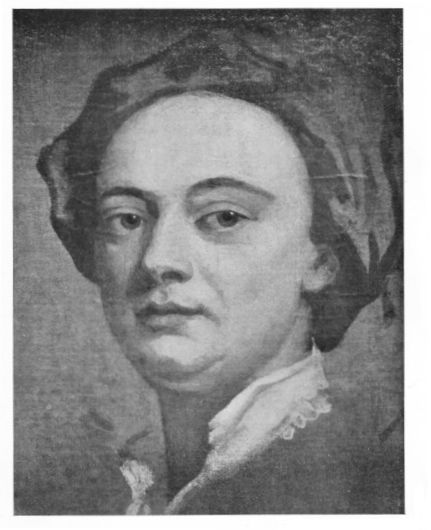
My contribution to the meeting is usually two bottles of Charles Shaw, a jar of mild salsa, and corn chips. The Johnnies (that is exactly what I call them) usually bring just themselves, due to their financial situation which is not so hot. One of the Johnnies works there, and with permission from the owner, he could have our regular sessions at the Brand. The only rule is that we have to turn off the lights. Therefore not use any electricity in the building. So the Johnnies supply candles and matches for our meetings. To get inspiration for “The Memoirs of Martinus Scribierus, ” we often talk about our favorite literary memoirs. Not exactly “literary” but I always admired Errol Flynn’s “My Wicked Wicked Ways, ” mostly for the title and the fact that you can’t really trust the information that he’s supplying in his book. We all agreed that our memoir should follow his path, and therefore a great chance that this book will be seen and read as a masterpiece.
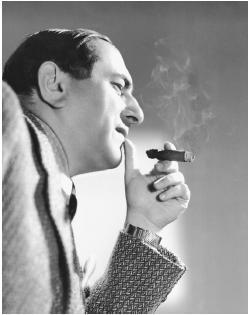
Since we don’t have any electricity, we can’t play music or show any films - which is a major part of our meetings. We’re all film geeks, and what we do, in placement of showing a film, we discuss the plots of our favorite film works in great detail. For instance, the last meeting I told the Johnnies about a film made in 1947 called “T-Men, ” which is a semidocumentary style film noir about two U.S. Treasury agents who go undercover in an attempt to break a counterfeiting ring. It’s a very exciting piece of work, and I enjoyed playing out all the roles in the film. I became quite skilled in using my hands to express the tale, and with the shadows cast by the lighted candle it looked pretty cool. I guess what we were doing is sort of a primitive version of cinema.
Only once was our meeting disrupted by the presence of the Glendale police. They drove by and noticed the flickering of the lighted candles through the large windows facing Brand Bouvelard. Luckly Johnny could contact the owner, and he over the telephone, cleared up the whole matter with the local police. The book is nearly finished, and to protect the innocent, we’re going to make the memoir look like it was published in London, sometime in the 18th century. But if one reads it, the narrative clearly takes place in 21st Century Glendale.
The two Jonnnies and I will stop and disband the club on December 31, this year. The bookstore’s owner is retiring, and we felt it would be appropriate to retire as well. The memory of the bookstore will last as long as the Glendale citizens and elsewhere, keep a memory of the store itself, but also anyone who owns or reads “The Memoirs of Martinus Scriblerus.” Culture doesn’t die, it just moves in the shadows of a flickering candle light.
Published on June 30, 2014 09:40
A personal statement about "2014" by Tosh Berman
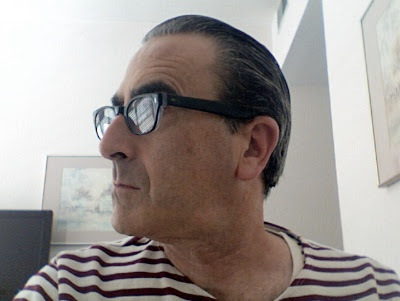
Hello Blogger and its citizens,
Today is my half-way mark on my writing project, where everyday this year, 2014, I write a narrative/essay and post it on Facebook as well as on my blog “The Wonder World of TamTam Books” at http://tamtambooks-tosh.blogspot.com. Today, shortly, will be my 181 post. If I live, or avoid bad luck, which appears to be always lurking around a dark corner, I should be delivering 184 more narratives/essays. The last day will be December 31, 2014.
Each essay/narrative is approximately 600 to 700 words. I first got the idea of doing this was on December 31, 2013, and I was of course, at a new year’s party. I was slightly buzzed from the drinks, and was sitting in a chair by the food, which by the way, was delicious. I don’t know where this idea came from, but it happened fast, and decided right there and then, that I will commit myself to produce a piece of writing everyday this coming year (2014). Unemployment may have been the inspiration, or the need to remove or comment on the skin that I have been living with for the last 59 years. Or perhaps, I was bored with the Facebook format, and needed to add something “zesty” to the recipe. Originally I wrote directly on the Facebook page, but over time, I made the decision to write the works on another document, and then add it to the Facebook page.
Without a doubt, this is the most serious work I have ever committed myself to. So easy to fail, or drop the conductor’s baton, that I live everyday in a combination of panic, hysteria, and contentment. It s almost like feeling like one’s drunk, and usually on a normal day in 2014, I find myself exhausted by the end of the day.
Nevertheless, who knows if Facebook will exist by the end of this year. For those who are fans, or just curious where this adventure will go to, you’re encouraged to subscribe to my blog at http://tamtambooks-tosh.blogspot.com. That way, you won’t miss anything. All the best, Tosh
Published on June 30, 2014 08:17
June 29, 2014
June 29, 2014

June 29, 2014
I’m losing my perspective on a moment-to-moment basis. Without a doubt, I just have to invent a world so I can exist in it. As I approach my sixth decade, I realized that time is not working in my favor. I need to devote my life to an idea that is important to me, and everything else must fall off the personal map. Right now I have something like 500 vinyl albums, and that is way too much for one man to take in. I am going to remove every album, except for my complete Dial recordings of Charlie Parker and his music. I also have a recording of Yves Klein’s “Monotone Symphony” as well. That particular piece represents a beginning as well as an end. It’s a full orchestra that plays one note for 20 minutes, and then silence for the next 20 minutes. I play this piece every day. It frees up my thoughts for the day, so I can start to write.
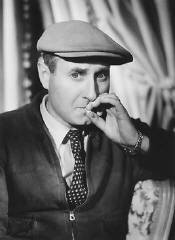
For the past twenty years I have been writing a series of crime novels that are translated into French, but never came out in English in the States. The series of novels be called “San-Antonio, ” who is also the author of the Tales, as well as its main character. The novels are all first-person narratives, and they deal with murder in its various narrations. I couldn’t find a publisher in the States, but a French publisher picked up on it, and it became a huge success over there and French speaking areas of the world. Since I don’t read or speak French, it seems that the translations are freely based on my original manuscripts. Even changing the plot time-to-time. One would think that after spending a great deal of time writing these novels, that I would be upset about the changes or even the re-writes of the work, but alas, I am simply amused. It seems the harder I work the more money I get, but alas, my original work is totally erased by others. Yet, through a pseudonym do I exist, but only as a shadow.
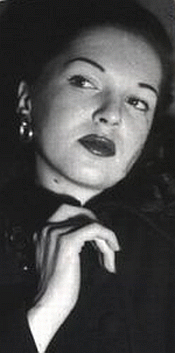
I’m grateful for Chan Parker’s memoir about her life with her common-law husband Charlie Parker. All I had was his music and some black and white images of the great man, and yet, the personal remembrance of a loved one, is much needed in this picture I have of Parker which was ghost-like and one got the feeling would be totally forgotten, if not for the few went out of their way to document their experiences with him. Either by design or fate, I pretty much destroyed any connection between yours truly and the world out there. “San-Antonio” will exist, but it will always be a mist or vapor that lingers in one’s memory, but never be able to place where that thought came from.
I’ve been writing a memoir of sorts, including a number of posts on Facebook. So just one can hopefully can leave a record of my existence. But obviously I don’t own the Facebook site, and that can disappear over time. No wonder I was drawn to the film “Taxi Driver” where the principal character is a person who barely exists. Only by an action of violence did he make a mark on the world. The main musical theme in “Taxi Driver” always conveyed a certain fatalistic narration, where one is not going to be able to dig themselves out of the grave that they helped dragged up. I prefer to leave confidential messages on the sand at the beach, which eventually the ocean and tide will erase.
Published on June 29, 2014 11:36
June 28, 2014
June 28, 2014

June 28, 2014
The worst thing that can happen to a fellow is to lose his strong sense of identity. As I referred to in another column, there is another person out there who shares my unusual name. As far as I know his name is legally real and was his given name by his family. What is the percentage that I share the exact name with another person, but also live in the same city? I have to be honest with all of you, that this leaves me anxious.
I’m an only child in my family, and I’m not used to playing with other children, in fact there is a telling sign regarding my role in one’s world - a class picture of my elementary class, but alas, I’m not in the photo. When I look at the photograph, I remember all my classmates as if it was yesterday. Yet, there is no indication that I went to this class, although clearly everyone in that photograph remembers me being in school with them, yet, it is almost like I wasn’t supposed to be there. Either by fashion or design, I’m rarely in group photographs, and I know there are people now out there who doubt that I even went to that school or class or location.
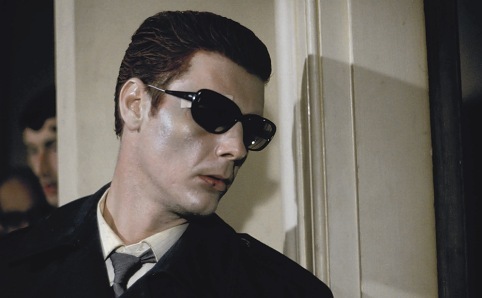
I never believed that I had a “double” or there is another “me” in the world. Everyone who knows me, knows that I have a strong sense of character, but over time I have started to feel that I was losing myself into a haze of someone else’s making. I have no solid facts in this matter. It is more of a mood than anything else. On the other hand, I’m very attracted to the idea of just walking away from my life and becoming someone else. It will be just one of the moments where I go out to get something at the market, and not come back home. I fantasize if anyone would even notice that I was gone. For instance, if I stop posting on Facebook, would anyone notice or cares?
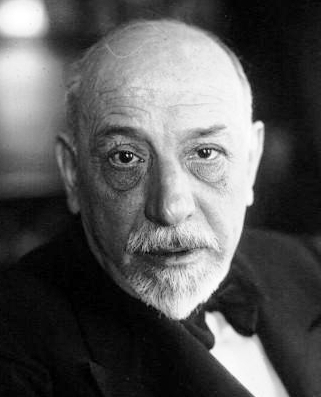
Since me and my ‘double’ share a similar e-mail address, I time-to-time do get his e-mail. Mostly from businesses, nothing ever personal in the content of the message, but every time I received these e-mails, I get the impression that I’m being pushed out of the world, which of course, causes me a sense of anxiety. But then I wonder why fight this feeling, perhaps it is best that I go on, at the very least, it will be just an adventure. This is not unnecessary a bad thing. Usually in life, we lead a role that we play in, and that’s the only life we are presented with. But alas, if we can obtain a second life or chance, to re-do or avoid certain mistakes one makes in their lifetime, would this not be a good thing? Again, I take the dice, and throw it. We’ll see what the numbers say.
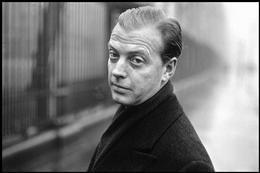
Published on June 28, 2014 11:31
June 27, 2014
June 27, 2014
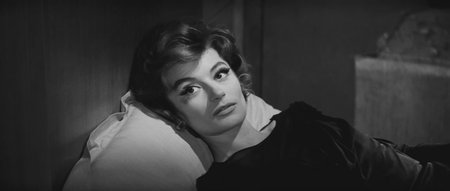
June 27, 2014
I like American pop culture, but I much rather wait and get my American culture through the eyes of the French. Being an American, I feel I’m too close to my subject matter, and with the French being obsessed with my culture, I can understand it much better. Rock n’ roll never made sense to me, till I started to listen to French rock n’ roll, because I feel that they are more in-tuned to the culture than I'm. I can only reflect who I am through someone else’s eyes. I’m always shocked to see a photograph of myself, compared to my image in a mirror. It is almost as if there are two separate people. The thing is I am not sure the reflection on the mirror is truly me, or the image captured by a photographer is the true me. The confusion is something I can’t separate from my physical existence and how other’s see me. Oddly enough, I don’t own that many photographs of me. Due to family fame, all my images are in hardcover books that cost around $60 a pop. If one chooses to do so, they can go into a bookstore and purchase images of me, that I don’t own, yet I become part of someone else’s life.
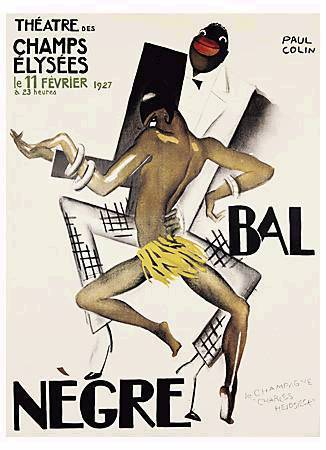
The first French rock n’ roll record, in 1956, is by Magali Noël, who was also an actress who appeared in many films by Fellini. Boris Vian wrote and performed the song with her called “Fais-moi mai, Johnny” (Hurt Me Johnny). The song was prohibited from French radio due to the sadomasochistic lyrics. I really never understood the appeal of rock, till I heard this song. Around the same time Noël released a 10” vinyl album called “Rock n’ Roll.” There has been a running joke in America that France can’t properly “rock, ” but alas, that is so untrue, because the French totally understand what the “rock” is. Americans only know the rock by instinct, like animals hunting food, it can smell the sex oozing out of the vinyl grooves. The French understood that the music came from American black culture, and therefore virtually have an academic approach to the music and its artists. It is understood that the French always pick up what’s great about America, through their knowledge of a culture’s music. Would classic jazz survive without the support of the French aesthetic? But again, like people owning my image, the French can’t really own Jazz, but they can adopt it, and re-formed it into another image of sorts. Josephine Baker, the great entertainer, became a huge star in Paris, and transformed herself into an image of an American, but in actuality more French than American.

All my life I pretty much wanted to live in Paris, because I felt that being an American in France would give me more of a self-image, that I totally lack, as I sit here in Silver Lake. Nevertheless, I’m deeply attracted to American iconic figures like Doc Pomus, who wrote songs with Mort Shuman, who ironically enough became a huge singing star in France, and introduced the songs of Jacques Brel to the English speaking world. Also sadly, Shuman passed away the same year Pomus died. It is like that they traveled in a circle together and ended up in the same place at the end of that circle. Creative people embrace their territories, like cats pissing to map out their areas of interest. One time I wanted to send my urine to the corner of St. Michel and Saint Germain, thinking that I could own or at the very least have a presence on that corner. But that is very much an illusion, and like a cloud I sort of float over these areas of interest, but I’m just a tourist here as well.
Published on June 27, 2014 12:06
June 26, 2014
June 26, 2014

June 26, 2014
“Noir” is a life one wants to live, and something that we are drawn to, but other times ‘noir” finds us. Culture, its politics, and alienation is pretty much the ingredients that make a great ‘Noir’ narrative. It is equally a genre that is highly visual. We can just use the word “Noir.” and we have a very clear picture what that could mean. For some, it is femme fatal dressed in something black and white. For others, it could be a scary version of architecture. For me, it is a combination of both, but generally I never have a problem with a femme fatal. In fact, as a species or type, I like them a lot. When I heard about Barbara Graham, the accused and executed killer, who was a “seagull, ” a prostitute that hangs out near navel bases, and basically had a bad hard life that is nothing but crime and vice. Including her parents, who were just like her, ruthless as they come. There is something sexy about that, and Barbara was stunning, wrong, and therefore sexually appealing to me.
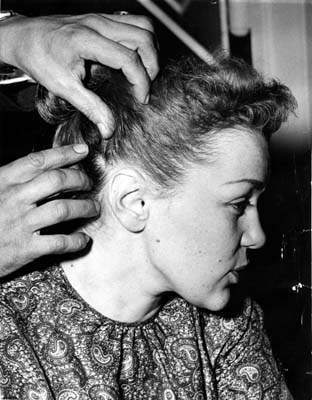
Barbara and her equally wicked drug addicted boyfriend and their other friend broke into a house owned by a woman who was reported to have a great deal of jewelry and cash. They couldn’t find the money, and eventually killed the old woman. The thing is losers never win, and of course they were arrested. It was pointed out that when the police arrested Barbara, she was only dressed in her panties, which in the 1950s must have been the hottest thing to read in a newspaper. Barbara’s last words at her execution was "Good people are always so sure they're right, ” which strikes me as the perfect noir thing to say as you are about to leap into the unknown. What is fascinating about her is not Barbara, but how the world responds to her. In reality, her life was totally wasted since her birth, yet, our culture needs the Barbara Graham to sort of keep us in line. Or at the very least, on the same moral ground, which of course murder is bad, sex is not good, unless it is with socially responsible adults, and most importantly, God forbid if hard drugs are involved. Nevertheless all these taboos are almost like pornography to me. What we really desire is to belong, whatever that family or society is correct or not -we need to be part of someone else’s dream, fantasy, reality, and live through their lives.

On the male version of “Noir” desire is Peter Lorre. The great German actor, who actually worked with one of my (dark) heroes, Bertolt Brecht. On top of that he actually played a child-murder that one can be sympathetic towards, even though his crime is taboo and unmentionable. He is so cruel, that the criminal and police world worked together to search for and destroy the Lorre charcter. Hinting that the biggest sin may be the alliance between crime and police, but nothing can be worse than a child-killer.
Peter Lorre was someone who had a series of problems in his actual life, that included a serious addiction to morphine. Yet, he pretty much worked till his death. A year or two before he passed to the great beyond, there was a German actor by the name of Eugene Weingand, who resembled the great Lorre and tried to change his name legally to Peter Lorre Jr. Lorre objected to it and also the studio American International Pictures which had Peter Lorre under contract. The court ruled that Weingand was just trying to cash on Lorre’s name, and refused his case. When Peter passed away, Weingand claimed to be the son of the actor, and even though he lost his case, he still used the name “Peter Lorre Jr.” When he died in Texas, he was hosting a horror show under the Lorre Junior name.

My name “Tosh Berman” is also under suspicion due that there is another Tosh Berman out there who got a series of bad press, and by no means have I met, or do I know him. Yet, the causal reader on the Internet may confuse the two identities. It should be clear to everyone that the only crime I admit to is a bad sentence here and there. Over the years, I have been attracted to the writings of Colin Wilson, who documented all sorts of horrible crimes, as well as writing a classic called “The Outsider.” Although I prefer his “Adrift in Soho, ” but that’s here or there. But what is interesting is that he pretty much spent his entire life and career focusing on those who went across the line between taste, honor, sex crimes and murder. Overall I much admire his work, and yet, as a writer and one who is attracted to the darkness that is out there, I still try to keep at least one toe on the light.
Published on June 26, 2014 11:02
June 25, 2014
June 25, 2014
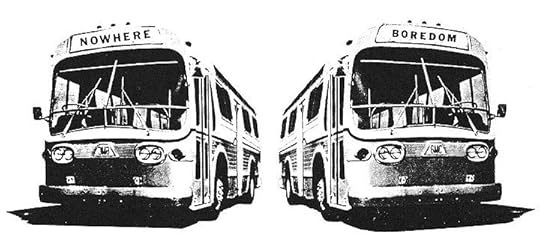
June 25, 2014
The one thing I fear yet feel comfort in is boredom. What gives me a great sleep at night, is realizing that I have nothing planned for the next day, and therefore the feeling that nothing will happen and time will sort of stand still, becomes a mantra as I close my eyes into a dark void. When I dream, it is always something anxiety driven, and it is mostly the fear of time passing by. When I wake up in the morning I realize this feeling is not only a dream, but the way of life for me. One can fill one’s life with things-to-do, such as marketing, gardening, making sure the trash is out for the pick-up, recycle items are in their proper bins, water the plants around the house, and keep daily schedules in check, by making sure you eat your meals at a certain time in the day, and if you assignments or deadlines, make sure you keep them and most important keep to the schedule. But the truth is I find all of that really boring.
Daily routines are boring. Right now I have a schedule where I write every morning till 11 or noon, take a bath to read, and then back on to the computer to work on another writing assignment. The one thing one can’t write about is boredom. There comes to a point where you’re just trying to concentrate on the words on your screen or page, and it becomes totally abstract. It does not have any meaning, because what you are writing is basically coming from the core of your or one’s boredom.

Strangely enough, Facebook I think depends on its success due to boredom. One can jump on the site, and take what they want, and then leave. But after ten minutes being off the site, one goes back on, and rambles on from one message to another, and sometimes you feel like you should feel emotional or get a charge from looking at someone’s meal, or animal, or even sex. But its a charge that has no value in one’s life, you’re just responding to things that people normally respond to, and if you think about it, it is just a depressing sense of time that’s passing in front of one’s eyes. The whole “troll” movement on Facebook or on other public sites, is nothing but boredom at work and play - and the “play” as used in this fashion is the joy of watching a building on fire, because one can only enjoy destruction when things are being destroyed. All of that comes as a result of boredom. In Oscar Wilde's "The Picture of Dorian Gray" the character Lord Henry Wotton says to Dorian ""The only horrible thing in the world is ennui, Dorian. That is the one sin for which there is no forgiveness."

For me to fight boredom I have to embrace it. Personally speaking, I realize that my boredom comes from learned helplessness. There was a demonstration organized by Martin Seligman regarding dogs. In his tests, a dog is repeatedly exposed to an aversive stimulus which the animal cannot escape. The dog stops trying to escape from the stimulus and behaves as if it is helpless to change the occurrence. When opportunities to escape becomes available, the dog chooses not to escape but to accept the pain. What happens is that there are two sets of tests. Group one, are dogs that can avoid an electric shock by jumping over a low partition. Group two were two dogs. One can stop the electric shocks by jumping, but the other dog can’t stop the electric shocks no matter what he or she does. So for dog 3, the shock was apparently inescapable. The other dog recovered nicely, but the one who couldn’t control the electrical shocks, learns to be helpless and exhibited symptoms that are similar to clinical depression. Also the dog declined to escape from the pain, and just learned to accept it by simply laying down passively and whined.
Boredom is recognizing time passing and being unable to fill it with meaningful activity or thoughts. I think our whole culture is based on our being forced to embrace a process that clearly doesn’t work. We have so many choices on the Internet, and on TV, yet, you slowly realize that those choices are not really that many, even it is technically, at least appearance sake, seems many. The only thing we’re left with is a sense of helplessness, which in turn becomes boredom.

Gambling, sexual activity, roaming the streets with no thought of destination offers moments of freedom from boredom, but to attack it at its very core, means that we have to redefine what is life, and that alone is not an easy task. What I do is learn to embrace the boredom, and try to find some inspiration from it. The wall in front of you is hard, but once you break to the other side, well, maybe another wall - nevertheless we learn to make a series of choices that are actually not choices, but sort of little prisons. The thing is we all have the ability to design our prison to our own making.
Published on June 25, 2014 11:30
June 24, 2014
June 24, 2014

June 24, 2014
I remember being in Topanga, looking up in the dark sky and seeing a metal flying machine hovering over the mountains, and then suddenly leaving full-speed to a destination which I imagine was either the other side of the moon, or a planet that we have no name for. Or, could it have been an illusion? Not long after that, I saw another vehicle in the dark sky that was hoovering closely enough to see its windows. It was saucer shaped, and as I squinted my eyes to hopefully give me a vision of its windows, it blasted off at great speed into the clouds. In my childhood, there were two facts: One, the Communist threat was a serious one, and two, aliens were visiting Earth. Of course, the U.S. government was putting a lid on all of this, I suspect to protect the citizens against mass panicking, but I was a 12 year-old and of course, I knew something was up, and these beings from outer space were checking us out. Or, in other theories, perhaps they are aircrafts from the future, and they're going back in time to visit. For them, sort of living history lesson. But they must not be identified or caught, because that would throw off our fate in life, where we actually need a mystery to keep going on a day-to-day basis.
When I was in school and brought this up with my fellow class-mates, some believed me right away, but there is always the nerdy smarty-pants who insist that it is impossible that flying saucers exist, due to their knowledge of science. I told him that there is science on Earth, but how about science from outer space? Is that the same science as the one we know on earth. The comic book hero, Superman, who is from another planet, can easily fly to another planet if he wishes to. That we know is a work of fiction, yet, is it not possible that there could be a figure like the Man of Steel? Maybe he or she (perhaps gender doesn’t exist in other parts of the universe) has the power to “breathe” outer space stuff, but does that mean it’s impossible for such a being to exist? I think not!
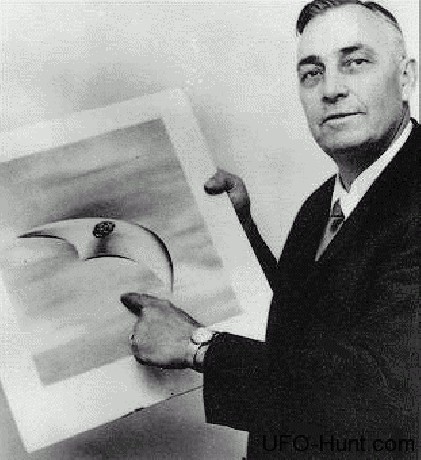
Kenneth Arnold was an aviator who was the first one in America who has witnessed unidentified flying object (UFO) in the state of Washington in 1947. Arnold indicated that he saw nine unusual objects flying in a chain. He described the object shape as “flat like a pie pan,” “shaped like a pie plate,” half-moon shaped, oval in front and convex in the rear,” “something like a pie plate that was cut in half with a short of a convex triangle in the rear.” Or simply “saucer-like.” Nevertheless, the press at the time, due to his descriptions of the flying objects, used the term “flying saucer.” The U.S. Air Force insisted what Arnold saw was a mirage. Which can be true, but otherwise Arnold became very much involved in the UFO community, where he spent a great deal of time interviewing others who have seen UFO’s as well as contactees. Meaning people who actually had communication with an alien.
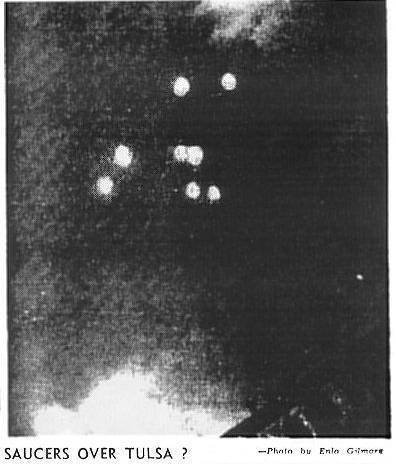
As a small child, I remember my father cutting out a photograph from a magazine, which I took from him and put it up on my bedroom wall. It was a picture of an alien who was either silver or gold colored, and he/she/it was holding hands with two adults, who look like they were the Secret Police from East Europe. I didn’t have an explanation of this photograph, but I believe it was a sign of evidence that these figures do exist, and this one crash landed in Europe and survived the accident… or was it shot down? No one knows what happened to this figure, and ever since then it has haunted me in a way where even though this could be a hoax or a fantasy even, but it is something that I need to have in my life, to exist on a day-to-day basis. There are a few things one can believe now, and everyday seems to be a continuing era of a world that is not good or not perfect. Yet, I tend to want to believe in something, and therefore, the impossibility of aliens coming to earth becomes very possible to me.
Published on June 24, 2014 10:19
June 23, 2014
June 23, 2014
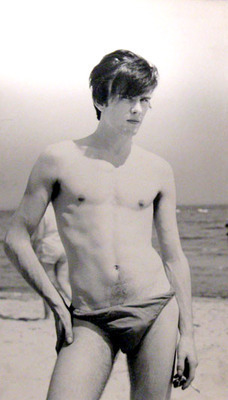
June 23, 2014
Most of my life I have been obsessed with a Beatle, but it wasn’t John, George, Paul, Ringo, or Pete Best. It was Stuart Sutcliffe. He was an old Liverpool friend of John Lennon, and probably one of his major influences as well. We all need to search for perfection, to better ourselves, and for John in those early years, it was Stu. All the Beatles were handsome, but Stu, was truly the most beautiful man in my lifetime and beyond. Although, I guess, in theory, I’m a heterosexual, but with a homosexual bent, going towards the image and thoughts on Stuart Sutcliffe.

What I have observed in books and magazines, I do like Stu’s paintings, but it’s mostly his visual image that captures my heart. Has he ever took a bad portrait? His beauty was like the tip of a sharpened pencil, not touched by paper or hand. When I see images of him, I think of a life that is not perfect, because he’s no longer on this planet, but exists in my head. Despite the fact that I never met him, nor any of the other members of the Beatle world, I like to imagine him in my life in some form or manner. Like Paul McCartney who was reported to be jealous of Lennon’s relationship with Sutcliffe, I too, feel left out by not knowing him personally.

Stu died in 1962, and he never knew how the world has changed, when his fellow friends sort of, in a brief moment in time, seemed to change the world. All an illusion of course, but at times, this is all we have. Yet, Sutcliffe seemed to have found a lover in Hamburg, and chose to remain in a world where he can paint. It was evident that a man who was so beautiful would be a very good painter as well. If you think about it, most celebrated painters were also fantastic looking people. There are ugly musicians, but for some reason a good painter is the one who always looks at the very least, beautiful. I often imagine his life as a Bob Fosse choreographed dance piece. He’s the lead, and I’m in his arms dancing in some one-bulb barely lighted artist’s studio, somewhere in Hamburg. Of course it doesn’t deal at all with reality, for instance I know by the photographs what Stu looked like, but for instance, I never heard his voice. It’s amazing when you think about how important he was to the Beatle narrative, yet, there is no recording of his voice. So all we get are just the dazzling images of him in the Hamburg years of his young life. I came to love him, but obviously it was more in love with the thought of loving him. The distance of my feelings for him and reality became a troublesome obsession on my part. I never expressed this to anyone, but some time ago I made the decision to do something about it.
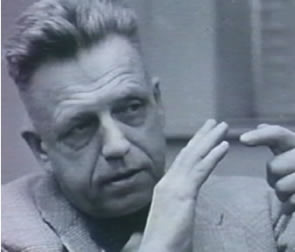
I went to the Kinsey Institute located in Indiana University to hopefully do a series of interviews with the director at the time, John Bancroft. I spoke to his assistant, regarding my thoughts on Stu, and how I cope day-to-day in my life. He made note of my sexual practices as well as some of the other strong sexual fantasies I have. He basically told me that he couldn’t give me advice, because of his role in this manner, is to record my story, and that is about it. But he did let me know off the record that he feels that a love for one’s own gender is very basic truth. I never had a fantasy of having sex with Stu, but more that I want to be a part of his presence. I think of Tom Ripley when he actually wanted to be the person that he was obsessed within the novel “The Talented Mr. Ripley.”
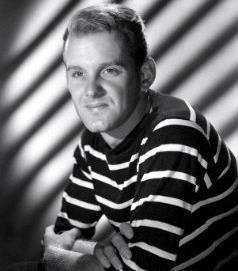
My feelings for Stu never went away, and I often felt angry when I come upon a Beatles record or film, for instance, “Help, ” because there is no reference to Stu Sutchliffe in the film. It is almost like he’s erased from history, and all I have are my thoughts of me being in his arms dancing “The Pajama Game.”
Published on June 23, 2014 10:53
June 22, 2014
June 22, 2014

June 22, 2014
The bookstore Book Soup and yours truly have a long history together. Both as a customer and as an employee. My first ten years there were off and on, and I worked there full-time from 1997 to 2012. So altogether around 25 years, I have been associated with the store. Mostly as a bookseller and then from 2009 to 2012, as its book buyer. But even as a buyer I spent a lot of time on the floor, monitoring sales as well as chatting with the customers and the staff.
My first time in Book Soup was when they were located up the street from where they are currently. The space was cramped, small, and cozy. One doesn’t go to Book Soup for space, you go there to be surrounded by books, and if you get hit in the head with a book, better yet! And that is precisely what happened to me in the art section, when I reached out towards the top shelf for a book on the British artist duo, Gilbert and George, that entire shelf fell on me. I remember the employee there was shocked when it happened. I said I was fine, and was slightly embarrassed what just took place. Although I was in a mild form of shock, I pretended everything was OK, and I even purchased the Gilbert and George book, just to save myself from further embarrassment by destroying their art section.
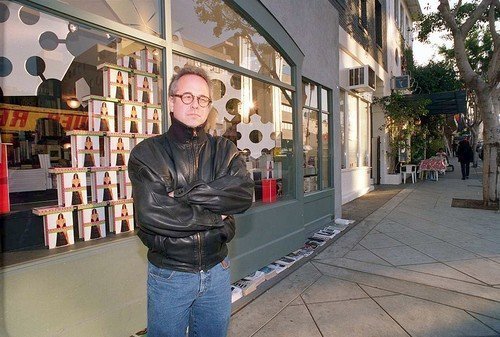
Through a recommendation from Michael Silverblatt, I finally got a job at the store, after working some years at a record store. I decided to make a huge jump from vinyl to the printed page, and doing so, I never looked back. In fact, there is not that much of a huge difference between music and reading. It always is and always will be an intense relationship between the listener/reader and the world. The man who hired me, Glenn Goldman, was the founder and owner of Book Soup. I immediately liked him, but was never sure if he liked me. He was remote, slightly eccentric, and sometimes difficult to connect with, but that was also the reason why I liked him. He struck me as the perfect person for the world of book selling. In many ways, it has nothing to do with the ‘real’ life that is outside the store. Yet it consistently reflects on that landscape outside the door of the business. In many ways, I felt like an outsider, but I was perfectly at home at Book Soup, because I felt it was the home of those who find a lifestyle outside the work, or place as difficult.
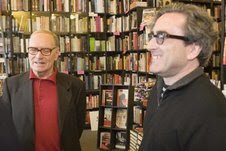
The clientele of the store is amazing, and truly famous and wonderful. To be honest, I have never met a customer at the store who I disliked. If they are willing to go in and share the adventure, I’m a fan or friend of that person for life. Including the legendary, the wealthy, the border-line insane, and some were convicted criminals - all wonderful people. Time-to-tiime one is approached by the gossip media to locate information regarding what a specific customer is reading or not reading, and I just basically want to shoot the reporter or editor, because one, it is none of their business, and two, it is a sin to me to rat on my customers. It is a bond that I hold up to this day. Doctor-client, lawyer-client, priest-client, and bookseller-client. Anyone who would distract that relationship was a person I would want to torture and burn for in perpetuity.
What I admired most about Glenn was his vision for the store. I think basically he just wanted a business that expressed the good life, and all the troubles that goes with such a world. It takes a certain amount of courage to open up a bookstore, but he either by design or luck, found a great location to open up a store that served not only the entertainment world, but also the whole world as well. Our customer base was everywhere from New York City to London, to various locations in Asia. Most were prominent people in their fields of interest and occupation, and it was truly an honor to serve their needs. Also the beauty of the store was that it never dumb-down its inventory. The trivial books were sold, but so were titles and authors who had a strong effect on the literary landscape. It was common knowledge that if Book Soup didn’t have that title, then it didn’t exist anymore. Glenn was a remarkable buyer for his store, and just working with him, I learned a lot regarding the subject matter of taste and how to present that ‘taste’ to our customer. He had personal reading taste, but he also listened to his customers, and with the advice of various publisher’s sales people he built the perfect book store.

The shock of hearing about his cancer, was horrifying on a lot of levels. One, I couldn’t imagine him being ill, and two, what will happen to Book Soup, a home for me for many years? When he went to the hospital he requested that I take over his buying duties, and without even thinking about it I told him “of course.” It was one of those moments that happened so fast, and so unexpectedly that I never really thought about it in great detail, but it was a moment that changed my life.
Using Glenn as a role model, throwing in some of my knowledge in the mix, as well as listening to the staff, customers, and observing the industry, I felt confidante that I was in my true role in life. To curate, to shape the inventory of a store is quite a remarkable adventure - but most of all, I never had someone trust me with such responsibility before. Glenn, although never compliment me verbally, but by him giving me this job, it was probably the most touching thing that happened in my life. Since today (June 22) is Book Soup’s birthday and therefore Glenn Goldman’s birthday as well (at least to me) I honor his memory, and also to the store that brought me a great deal of happiness. Oh and books as well.
Published on June 22, 2014 10:40



